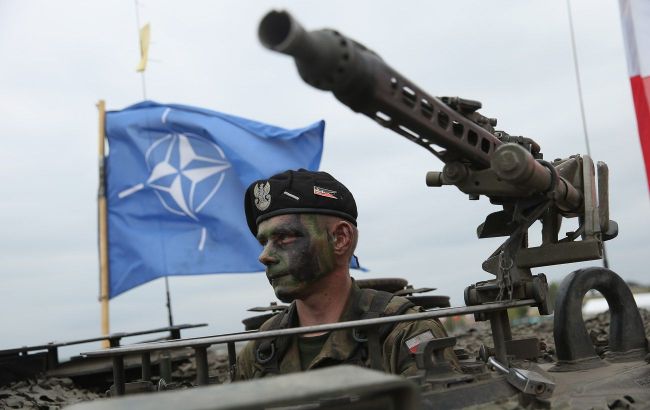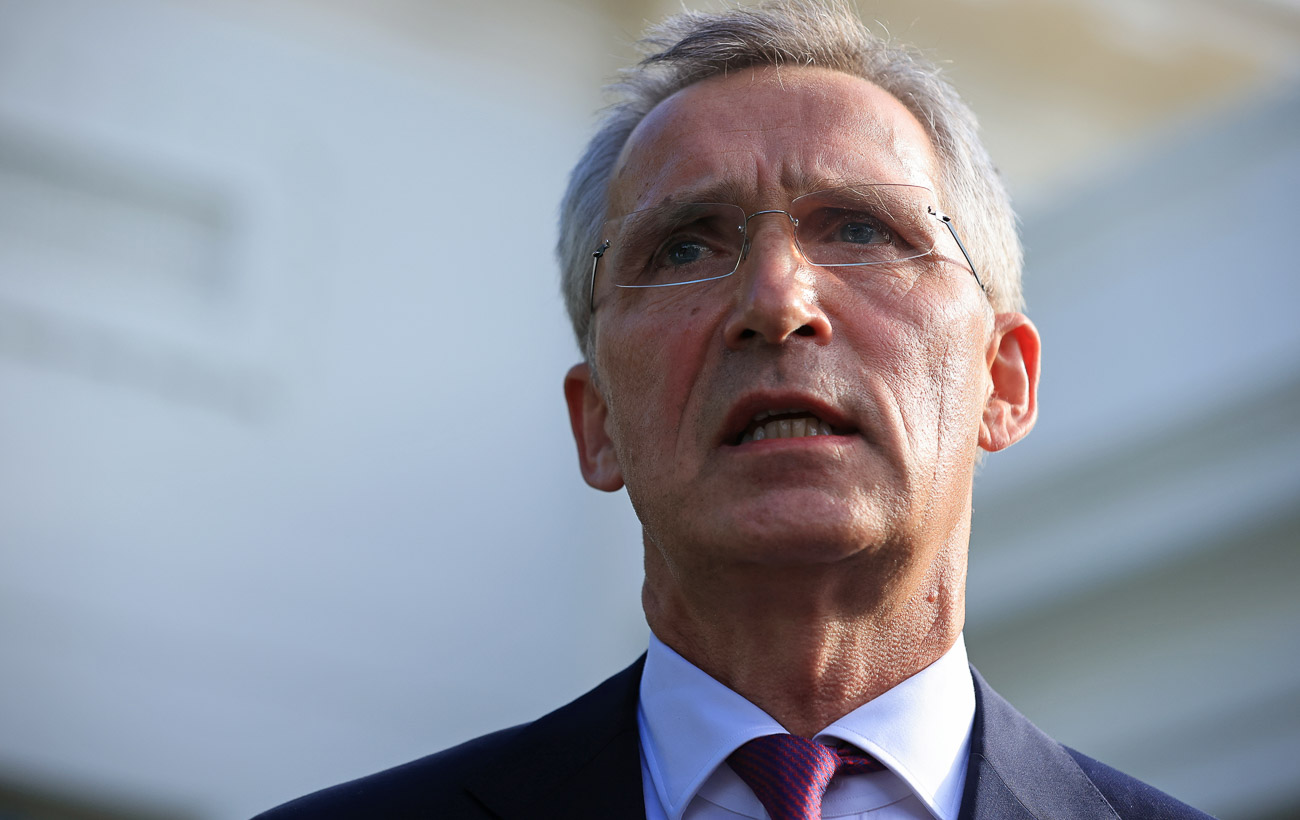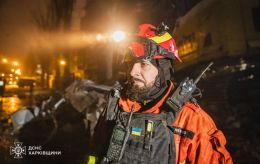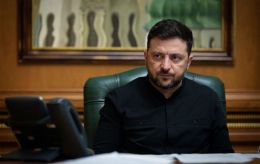NATO-Russia war is not fantasy: Is Alliance preparing for attack and what leaked plans say
 NATO is preparing large-scale exercises amid possible threats from Russia (Photo: Getty Images)
NATO is preparing large-scale exercises amid possible threats from Russia (Photo: Getty Images)
In the West, there is active discussion about the threat of Russian aggression against one of the NATO members. Media outlets publish scenarios and infographics, while officials are urging preparations for a possible war. More details on the military capabilities of Russia and NATO and how the conflict could develop can be found in the article by RBC-Ukraine.
The preparation of the material involved publications from tabloids Bild and Daily Mail, statements from Western and Ukrainian officials, data from the statistical portal Statista, and comments from the Head of the Сenter of Military Law Researches, Oleksandr Musiienko.
Two scenarios. How and when Russia can attack NATO
Discussion of Russia's plans to attack the eastern flank of NATO began with the publication of the German tabloid Bild. It claimed to have received a secret document, "Defense of the Alliance-2025," with a possible scenario of events leading to an alleged "inevitable outbreak of war" in the summer of 2025.
The described events are supposed to unfold from February 2024 with a new wave of mobilization of 200,000 Russians. According to the German Ministry of Defense scenario, a successful offensive in Ukraine is expected by June. In the middle of the year, Russia will transition to hybrid attacks on the West, including stirring up ethnic Russians in the Baltic countries. The Kremlin will use possible clashes as a pretext for large-scale exercises in September in western Belarus, involving the deployment of 50,000 troops to the borders of Lithuania and Poland. Similar to the situation in 2021 before the invasion of Ukraine, emphasizes Bild.

The scenario of a possible Russian invasion from supposedly secret documents of the German Ministry of Defense (photo: infographic by Bild)
In October, additional troops and medium-range missiles may be deployed in Kaliningrad, using a pretext of a supposed future NATO attack. The priority target will be the capture of the Suwałki Corridor – a 100 km wide strip between Belarus and Kaliningrad connecting the Baltic countries with allies. For this purpose, a border conflict and disturbances with casualties will be initiated in December. The alliance's response may be insufficiently decisive because, at that time, the United States will be "paralyzed" after the presidential elections.
Then, in January 2025, Poland and the Baltic countries will declare a growing threat from the Russian Federation at a special NATO Council meeting. In spring, Russia will again deploy additional troops to its borders. Russia will place two tanks and one motorized rifle division with 70,000 troops in Belarus. According to the scenario, NATO will only consider containment measures in May, and on the so-called Day X, it will deploy 300,000 troops to the eastern flank.
Western officials promptly responded to the Bild publication. NATO representative Janis Sarts noted that the media received not a secret intelligence analysis but only a scenario for future exercises.
"I can add that considering various scenarios – even if they are extremely unlikely – is part of everyday military activity, especially in the field of training," said one of the representatives of the German Ministry of Defense.
Meanwhile, the British tabloid Daily Mail drew attention to the statement of the NATO Military Committee Chairman Rob Bauer, who predicted a major armed conflict within 20 years. Referring to former military leaders and experts, the publication believes Russia's attack may have several phases. The first is cyber warfare aimed at logistics and missile strikes.
"Russia will not hesitate to use hundreds of long-range precision missiles against civilian targets across Europe. Russia has already hit civilian targets. If Russia decides to attack NATO, it will launch missile and long-range drone attacks on all major seaports, airports, and transport hubs in Europe," said former US Army Commander in Europe Ben Hodges.
Then, the second phase will be an attack on land, sea, and air. In his opinion, Moscow learned from its mistakes in Ukraine and, with the help of China and Iran, managed to replenish arsenals. In this phase, an attack on the Suwalki Corridor is possible, after which Putin will pause to assess NATO's reaction. If the alliance hesitates with measures of collective defense enshrined in Article 5, he will not stop, added Hodges.

Possible scenario of aggression over the next 20 years (photo: infographic Daily Mail)
Western media did not publish scenarios of a Russian invasion just for the sake of it; it is quite probable that intelligence sources in Germany and Britain shared this information, according to Olexander Musiienko, the military expert.
"I think about 80 percent of what is described there is true, and it was done consciously. The goal is to mobilize the political elite and society of NATO countries, to show that military conflict with Russia is not fantasy but a possible reality if Ukraine is not supported if Russia is not stopped and restrained," he told RBC-Ukraine.
According to him, the described plans correspond to Russia's logic. Previously, Russia moved nuclear weapons to Belarus, expanded its military presence, including through Wagner mercenaries, transferred Iskander complexes, and today constantly threatens the Baltic and Northern European countries. Russian propaganda has long been claiming that a war against NATO is already underway in Ukraine.
"I think the plans were deliberately published to show threats not only to Ukraine. The choice is obvious: either send your soldiers to war or give Ukraine weapons. The more we destroy Russian troops, the less opportunity they have to use these forces against NATO countries," the expert noted.
However, Bild is mistaken when it writes that before aggression against the West, Russians need to defeat or capture a larger part of Ukraine. Putin may attack when he realizes the inevitability of defeat in Ukraine.
"Then they will dare to escalate to push the West into negotiations. They will say that no one needs direct war, and, of course, they will propose discussing the fate of Ukraine," Musiienko said.
The expert also drew attention to another publication. Recently, The Times published estimates from analysts at the International Institute for Strategic Studies (ISIS) who doubt that the United States will respond if Russia uses tactical nuclear weapons. According to him, such materials in the media appear to stimulate support for Ukraine and restrain growing threats.
How the world reacts? And can Russia attack while fighting in Ukraine
German experts believe armed confrontation with Russia may unfold in 5-8 years. German Defense Minister Boris Pistorius does not currently see a threat of an attack but trusts the experts.
"We hear threats from the Kremlin almost every day ... so we have to take into account that Vladimir Putin might even attack a NATO country one day," he said.
The chair of NATO's military committee of national chiefs, Admiral Rob Bauer, just in case, noted that the alliance's armed forces are ready for war, but the populations of Western countries must also prepare for it. Minister of Civil Defence Carl-Oskar Bohlin stated that Swedes must act to enhance the country's resilience.
"Peace is not a fixed constant. Many people have said it before me, but let me make it official, more direct and clear: there could be a war in Sweden," he emphasized.

NATO Secretary-General Jens Stoltenberg has not seen direct threats to alliance countries (photo: Getty Images)
The Chief of the Norwegian Army, Eirik Kristoffersen, advocates for the buildup of NATO's military potential. He believes that within 2-3 years, there will still be a window for strengthening air defense, missile production, and military equipment. Lithuania, Latvia, and Estonia have decided to create a joint defense zone on the border with Russia and Belarus. In addition, Lithuania and Poland will conduct exercises in the Suwałki Corridor.
"We understand that if Russia is not stopped in Ukraine, it could continue. And then it's the Baltic States who would be next, " said the head of the Lithuanian Ministry of Foreign Affairs, Gabrielius Landsbergis.
The day before, NATO Secretary-General Jens Stoltenberg said that he does not see direct threats to alliance members, but NATO is closely monitoring Russia. According to him, the increase in military presence is aimed at preventing an attack by Russia. Ukrainian military intelligence representative Andrii Yusov also commented on the threat of such an attack yesterday.
"The Main Intelligence Directorate has information, and, of course, the signals that are being publicized, including by international media experts. They state that Russia is indeed a threat to security in Europe and NATO," he said.
Earlier, Secretary of the National Security and Defense Council of Ukraine, Oleksiy Danilov, ruled out the opening of the "second Russian front" until the aggressor's troops are fighting in Ukraine. Expert Oleksandr Musiienko disagrees with this. According to him, Russia is already prepared for hybrid attacks on the Baltic countries, involving intelligence agents and the same Wagner mercenaries for further sabotage. The goal is to provoke discussions about whether to react to them collectively and apply Article 5 on collective defense. Moreover, the option with "little green men" is not excluded, who, under the guise of protecting Russian speakers, will urge Moscow to intervene directly.
"And Russia will introduce its forces. Even at the cost of easing pressure in Ukraine when it realizes it cannot achieve military goals, that defeat threatens here. The Russians will shift the focus to make the defeat not look total," he commented to RBC-Ukraine.
NATO in numbers. Briefly about the military strength of the alliance
Last year, NATO approved detailed plans to counter Russia in the Arctic and North Atlantic, Central Europe, and the Mediterranean region. Next month, the most extensive exercise since the end of the Cold War, "Steadfast Defender," will take place on the eastern flank. All alliance member countries and Sweden, whose entry is expected this year, will participate. By the way, yesterday, it was ratified by the Turkish parliament, leaving only Hungary to do so.
Plans have also been announced to increase the number of European forces on high alert from 40,000 to over 300,000. Earlier, the Eastern Flanks were reinforced from four to eight combat groups – Bulgaria, Hungary, Romania, Slovakia, and the Baltic countries. Defense spending is also increasing. In percentage terms, Poland leads with 3.9%, followed by the United States with 3.49%, Estonia with 2.73%, Lithuania with 2.54%, and the United Kingdom with 2.08% of GDP.
In a conflict, the theoretical bloc can deploy over 3.35 million military personnel, 20,000 aircraft, 12,400 tanks, over a million armored vehicles, and up to 15,000 units of towed, self-propelled, and rocket artillery. The military-naval fleet comprises over 2,100 ships, including 16 aircraft carriers and 143 submarines. Regarding nuclear weapons, there is parity in the number of warheads - up to 6,000 on both sides.
All this does not guarantee that Russia will not dare to attack. The nature of this will depend on the possible theaters of military operations.
"If it is exclusively the Baltic countries (and there are threats to Sweden and Denmark as well), there will be no deployment of a 500,000-strong Russian contingent. But the factor of nuclear blackmail will come into play. Russia may threaten a tactical strike on any Baltic country or Poland if the alliance interferes," the expert believes.
The deployment of US tactical nuclear weapons to Poland could be a deterrent measure, he added.
Russia is inferior in almost everything. And it may only consider a swift war
In December 2023, Putin increased the strength of his army to 1.33 million active military personnel. The Russian Ministry of Defense cited the "necessity of an adequate response to the aggressive activities of the NATO bloc." Military expert Major Reserves of the Armed Forces of Ukraine Oleksii Hetman called such an argument funny in a conversation with RBC-Ukraine.
"When they start saying that NATO threatens them, I think it even causes a smile in many within Russia. No NATO ever planned to threaten them. Why? Why would NATO need territory in Russia? They just need to justify the increase in the number of military personnel in the Russian-Ukrainian war," he said.
Read more about this in the material "Russian maximum: Putin's potential for army expansion and assessing 'pain threshold.'"
On paper, Russia lags behind NATO in many categories of military capabilities:
- fighters - 773 vs. almost 4000
- transport and special aircraft - about 600 vs. almost 2,500
- helicopters - 1,500 vs. 8,600
- armored vehicles - 150,000 vs. 1 million
- various types of military ships - 600 vs. over 2150
The problem is that Russia has been in full-scale war with Ukraine for two years, and presumably, it is capable of deploying forces more quickly. The most likely scenario being considered is a rapid war with airborne operations and border breakthroughs. According to Olexandr Musiienko, the Russians are not interested in tank battles. At most, they might seize some territory and resort to nuclear blackmail.
"The challenges are serious; Putin moved nuclear weapons to Belarus for a reason. If they use it, the response will target Belarus, and then they will sit down to negotiate. That's Russia's logic. If they manage to split NATO for some time, it's good; if not, it will be a stimulus for negotiations to prevent a global nuclear war. That's their calculation. They are walking on the razor's edge, and the idea of de-escalation through escalation is still alive for them," the interlocutor added.

